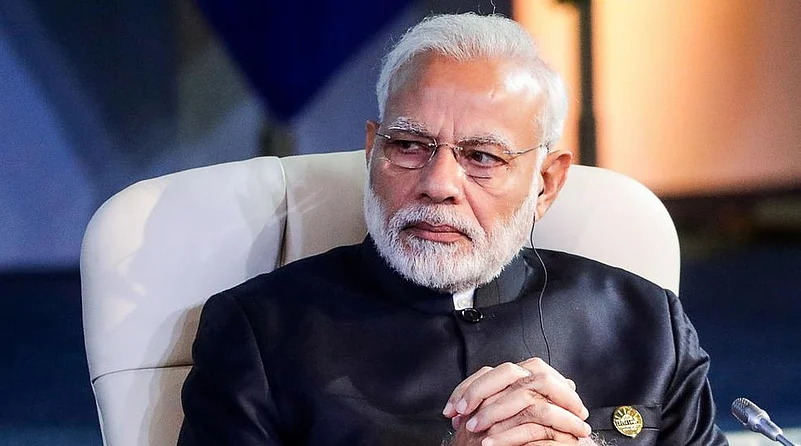Prime Minister Narendra Modi leaves for Washington Wednesday for an official visit to the US. This will be Modi’s first major trip abroad since the pandemic halted all international travel. As such this will be Modi’s first in-person meeting with Biden since he assumed office. Modi will be accompanied by a high-level delegation, including National Security Adviser Ajit Doval, and foreign secretary Harsh Shringla and senior officials. Foreign minister Subramanyam Jaishankar is already in the US and will join the PM’s team in Washington.
The Prime Minister’s visit will have three major elements—a bilateral with Biden and his Vice President Kamala Harris takes place on Friday at the White House. The first summit of the quadrilateral security dialogue, commonly known as the quad is being hosted by the US president on the same day. Here Japan’s Prime Minister Yoshihide Suga and Australia’s Prime Minister Scott Morrison will also be present. The quad summit has already angered China, which see’s the coming together of the four nations as an attempt to contain its rising political, military and economic might in Asia.
Advertisement
Modi will attend a COVID-19 global summit called by President Biden soon after he lands in the US. The third segment of the visit will be in New York, where Modi will address the UN General Assembly. There will be also be meetings with American business leaders as India continues to pitch for investments from abroad. He flies back home on September 26.
"At their bilateral meeting on September 24, PM Modi and US President Biden will review India-US relations. They are expected to discuss how to bolster trade and investment ties, strengthen defence and security collaborations and boost clean energy partnership among others," foreign secretary Harsh Shringla told reporters at a briefing ahead of the visit.
Advertisement
The evolving situation in Afghanistan will certainly be a major topic of discussion at the bilateral. The Indian side will share their views and concerns about Afghanistan once again turning into a terror hub. Considering India’s past experience with the Taliban, jihadi warriors crossing over to Kashmir from Pakistan to bolster militancy in the valley is of great concern to New Delhi. Pakistan will certainly also figure in the conversation.
India’s ties with the US transformed since the signing of the 2006 civil nuclear agreement. Since then high-level visits between leaders and officials have been frequent. The warmth in India-US ties had much to do with China’s growing power and its attempts to dominate Asia. Washington wanted to help India grown primarily to balance China’s rise. The quad arose from this strategic compulsion to contain China’s aggressive and often bullying tactics in Asia. The idea was to thwart the move by a loose alliance of democratic countries forming an arc across the Asia-Pacific region. The term Indo-Pacific was introduced by the US to take care of New Delhi’s concerns of the increasing presence of Chinese naval ships in the Indian Ocean. In 2014, when Chinese submarines docked in Colombo harbour, not once but twice, alarm bells rang in New Delhi. The threat that a rising China posed to the world and its challenge to US dominance finally led to the quad taking shape. Significantly, the first major foreign policy event organised by Joe Biden after taking office was a virtual quad summit.
However the sudden announcement earlier this month, by Australia,UK and the US (AUKUS) of a tripartite defence deal had come like a bolt from the blue. India was kept in the loop. The US will now help Australia build eight nuclear powered submarines. Ironically Washington had been cool to the idea of providing India with similar technology though New Delhi had long wanted it. This has dampened some of the enthusiasm for quad among many sections in India. Will the AUKUS, which will in future join the US and British navy to patrol the Indo-Pacific overtake the significance of quad? When asked about this at the news conference, the foreign secretary said : "Let me make it clear Quad and AUKUS are not groupings of similar nature. Quad is plurilateral grouping, group of countries with a shared vision of their attributes and values. We also have a shared vision of the Indo-Pacific region to be open, transparent, inclusive region." To be fair India had always spoken of a collective Indo-Pacific architecture which would have the ASEAN at the centre.
Advertisement
"The Quad has adopted positive proactive agenda which, as I said, has wide arrays of initiatives at the global level to address some of the issues of the day. This includes dealing with the COVID-19 pandemic, including the supply of vaccines to the Indo-Pacific region. It includes working on new and emerging technologies, it includes working on issues like climate change, infrastructure, maritime security, education, humanitarian assistance disaster relief. There is a wide array of initiatives the Quad has undertaken which are designed to cater to the requirements of Indo-Pacific," Shringla explained. The quad is still work in progress and will develop in time. But the central question remains, will it finally be more a symbolic getting together of like-minded nations or something more substantive.




















